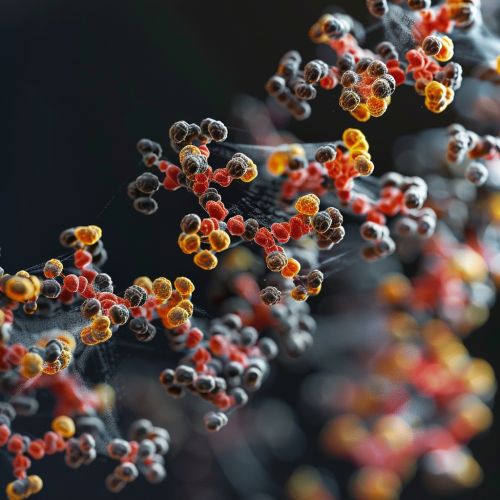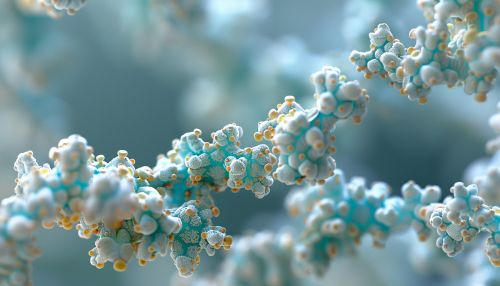Rubisco
Overview
Ribulose-1,5-bisphosphate carboxylase/oxygenase, commonly known as Rubisco, is an enzyme involved in the first major step of carbon fixation, a process by which atmospheric carbon dioxide is converted by plants to energy-rich molecules such as glucose. In chemical terms, it catalyzes the carboxylation of ribulose-1,5-bisphosphate (also known as RuBP). It is possibly the most abundant protein on Earth.
Structure
Rubisco is a large protein complex composed of 16 subunits. Eight of these are large subunits (approximately 55 kDa each) and eight are small subunits (approximately 15 kDa each). The large subunits are coded by the rbcL gene located in the chloroplast genome, while the small subunits are coded by the rbcS gene, which is nuclear-encoded and then imported into the chloroplast. The large subunit has the active site involved in the binding of substrates and the catalysis of the reaction, while the small subunit assists in maintaining the structural integrity of the protein complex.


Function
Rubisco's primary function is to catalyze the carboxylation of RuBP. In this reaction, one molecule of CO2 is incorporated into RuBP, which is then split into two molecules of 3-phosphoglycerate (3-PGA). This reaction is the first step in the Calvin cycle, which is the light-independent stage of photosynthesis where carbon dioxide is fixed into organic molecules.
However, Rubisco is not a perfect enzyme. It also has an oxygenase activity, where it catalyzes the reaction of RuBP with O2 instead of CO2. This reaction, known as photorespiration, is energetically wasteful as it does not produce any ATP or NADPH, and instead consumes these molecules. The ratio of carboxylation to oxygenation is influenced by the relative concentrations of CO2 and O2 in the environment, as well as the temperature.
Evolution
The evolution of Rubisco has been a topic of significant interest. It is believed that Rubisco evolved from a more primitive enzyme that could only fix CO2. The dual activity of Rubisco, both as a carboxylase and an oxygenase, is thought to be a result of this evolutionary history. The oxygenase activity is considered a 'mistake' that has been carried forward in evolution due to the lack of a better alternative.
Importance in Agriculture
Rubisco is of immense importance in agriculture as it is the enzyme that is directly responsible for the fixation of carbon dioxide, the process that leads to the production of all the organic compounds that are essential for life. However, the inefficiency of Rubisco, particularly its oxygenase activity, is a major limitation to crop productivity. Scientists are therefore exploring ways to engineer a more efficient version of Rubisco, either by increasing its carboxylation activity or by reducing its oxygenation activity.
